Visualizing the invisible has always been the goal of artists and scientists.
[Note: Page numbers refer to pages in the book.]Julian Voss-Andreae
As in his Quantum Man (pp. 119-20), Julian Voss-Andreae explores ambiguities in quantum physics and how they manifest themselves dramatically in our daily world. The appearance of objects depends on how we view them. Quantum Man focussed on the mind-boggling wave/particle duality according to which an electron can be a wave and particle at the same time. This is beyond our senses, this is unimaginable and so unimageable. How we “look” at the electron, that is what experiment we use, that is what it is, either a wave or a particle.
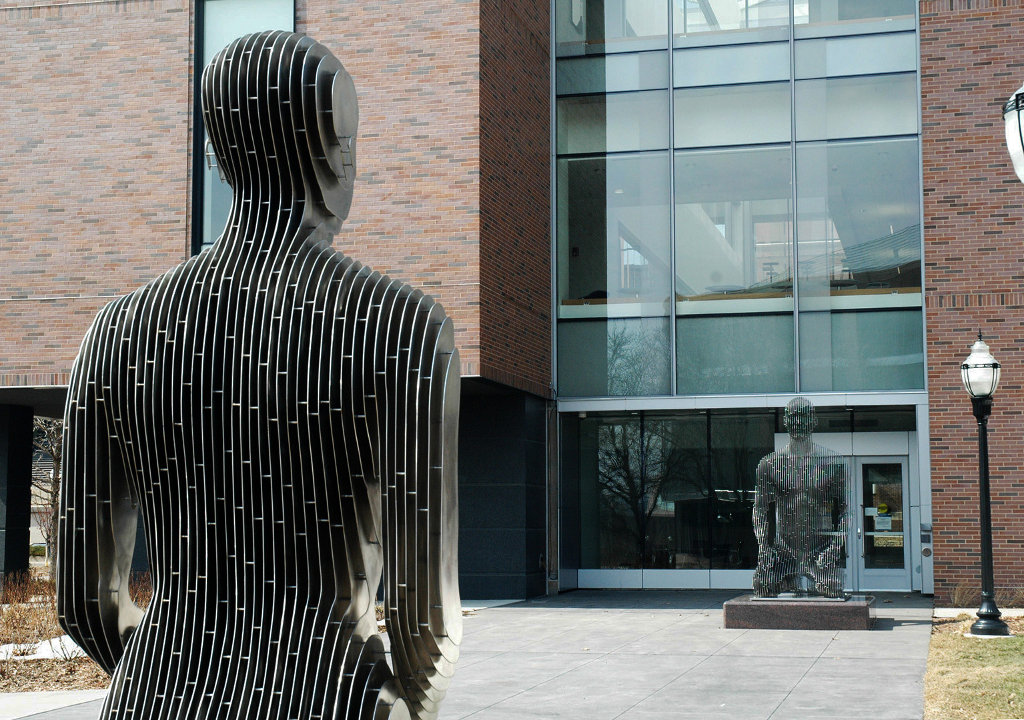
In 2014 Voss-Andreae produced Spannungsfeld, a huge work consisting of two tall 10 foot tall figures kneeling and facing each other. Each is made up of a large number of vertical, parallel evenly spaced steel slices. As with Quantum Man, from certain perspectives the two figures almost disappear. But here he goes beyond Quantum Man with its single object to a male and a female, a set of dualities, suggesting positive and negative charge, love and hate. Like yin and yang they cannot exist without each other and together make up a whole. They are complementary. Spannungsfeld is a meditation on Eastern religion, which parallels abstruse concepts in physics.
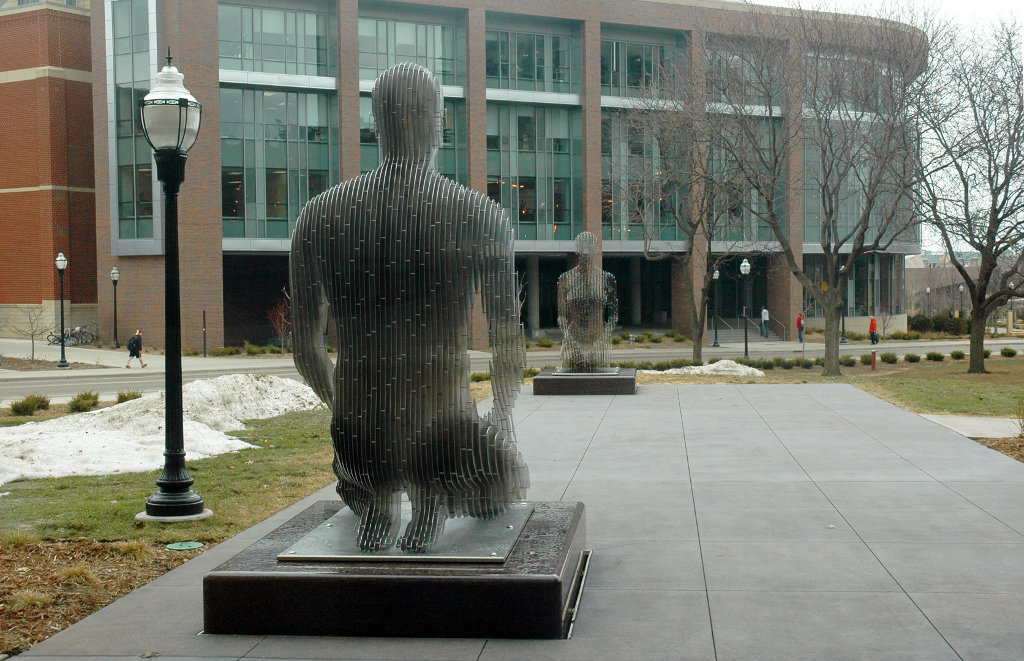
Julian Voss-Andreae comments: http://www.pa25.org/artist/julian-voss-andreae/
Evelina Domnitch & Dmitry Gelfand
Domnitch and Gelfand ask evocative questions like, “Is it possible to create a sonic rainbow? Is it possible to render wave behaviors of sound into those of light?” (pp. 122-23). One of their solutions is Camera Lucida, or light chamber. For this they took the audible sound from a musical composition and modulated it into the ultrasonic register, using a chamber containing liquid made up of over 90 percent sulphuric acid. The ultrasonic waves cause bubbles that implode violently, emitting light. This combination of sound and light is called sonoluminescence. Thus they create a “sonoluminescent universe.” The image in Colliding Worlds gives you the general idea (p. 122). This video evokes the beauty of this creation.
Another mesmerizing work by Domnitch and Gelfand is 10,000 Peacock Feathers in Foaming Acid. In this live performance they shoot laser beams into clusters of soap bubbles at just the right angles to create projections akin to phenomena of non-linear optics and which also simulate the dynamics of living cells using notably simple equipment – a laser and a dish with soap bubbles. There is a spectacular peacock-like display of colors as the beams split into multiple, very fine threads.


Domnitch and Gelfand often perform this piece by projecting it onto the ceiling of a “Sphaerae.” This is a hemispherical structure with a light-weight skin which keeps its shape through air inserted using several large pumps. The sensual experience begins on entering the Sphaerae. You squeeze through a tight slit, exerting considerable pressure with your arms to open it but not let too much air leak out, quite a claustrophobic experience. You burst into an interior dimly lit with colored light – like being born again, hence the vagina-like entrance which is also an exit. You begin to feel edgy because you wondering what would happen if the pumps failed… Inside the atmosphere is exhilarating with many people milling about. Most stretch out on the floor, gazing upwards at the dance of multicolored light interacting.
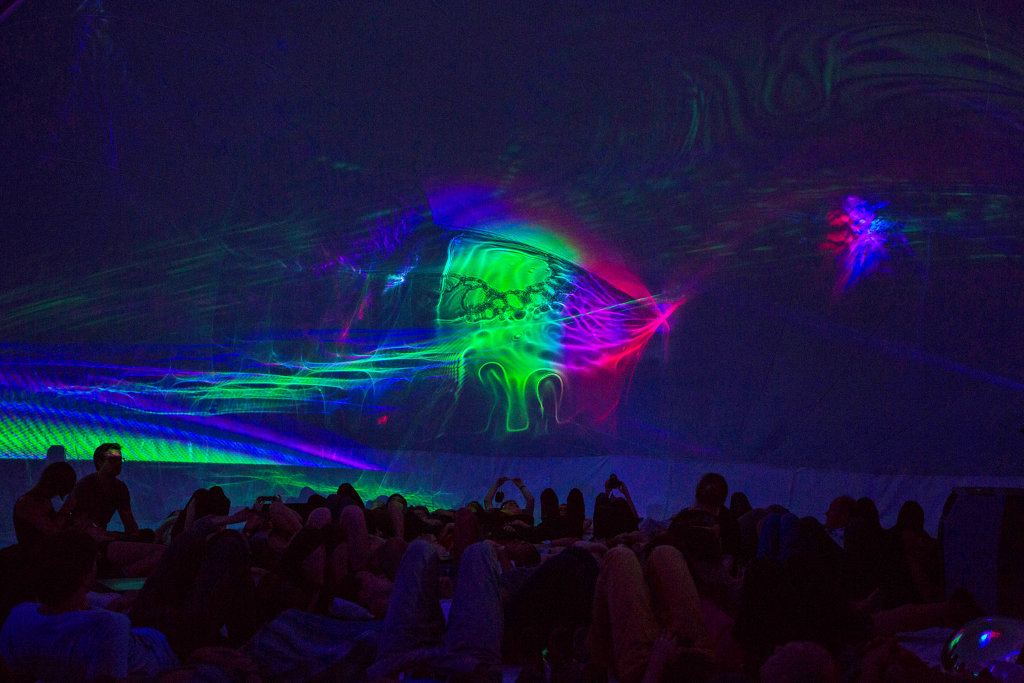
All this is accompanied by pulsating sound often written by Paul Prudence using algorithms (pp. 249-253) – a twenty-first century multi-sensory performance.
In motion it’s quite something else!
Steve Miller
Steve Miller’s work sits on the boundary between physics-influenced and biology-influenced art.
His Self Portrait in Yellow, 1992 is an MRI of his spine superimposed with EKG signals together with an MRI of his scrotum (p. 157). As Miller told me, he wanted to reinvent the genre of portraiture “that had been marginalized by photography” (p. 156). Twenty-first century technology allowed him to do it.
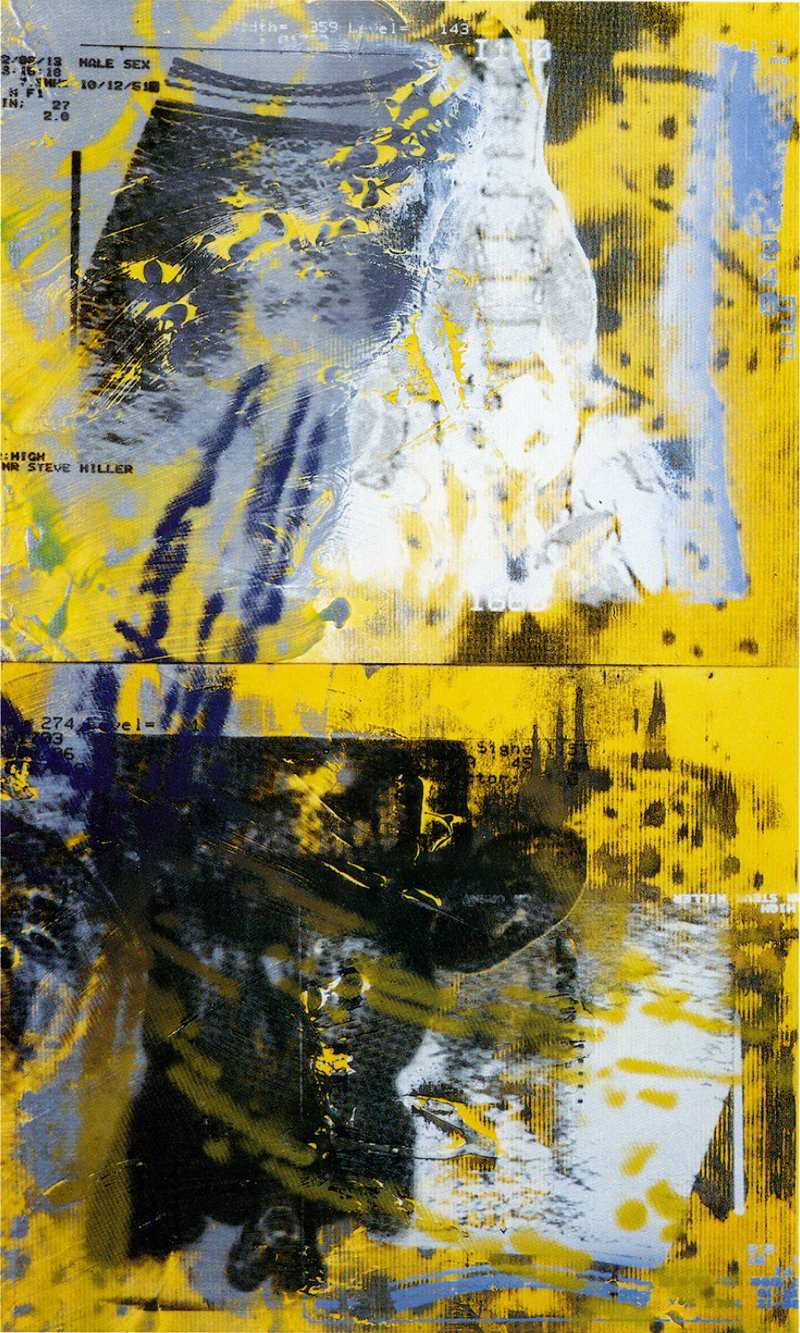
Courtesy of the Artist
Another example of Miller’s reinvention of portraiture is his Portrait of Dr. William Frosch, his one-time psychiatrist. It is a rather surreal juxtaposition because besides being a portrait of Dr. Frosch, it is also a view into the mind which peered into Miller’s mind.

Courtesy of the artist
Miller created a series of magical works in which photographs of potassium ion channels are superimposed with equations from the biologist Roderick MacKinnon’s note books. Among them is Protein #330, 2003 (p.160).
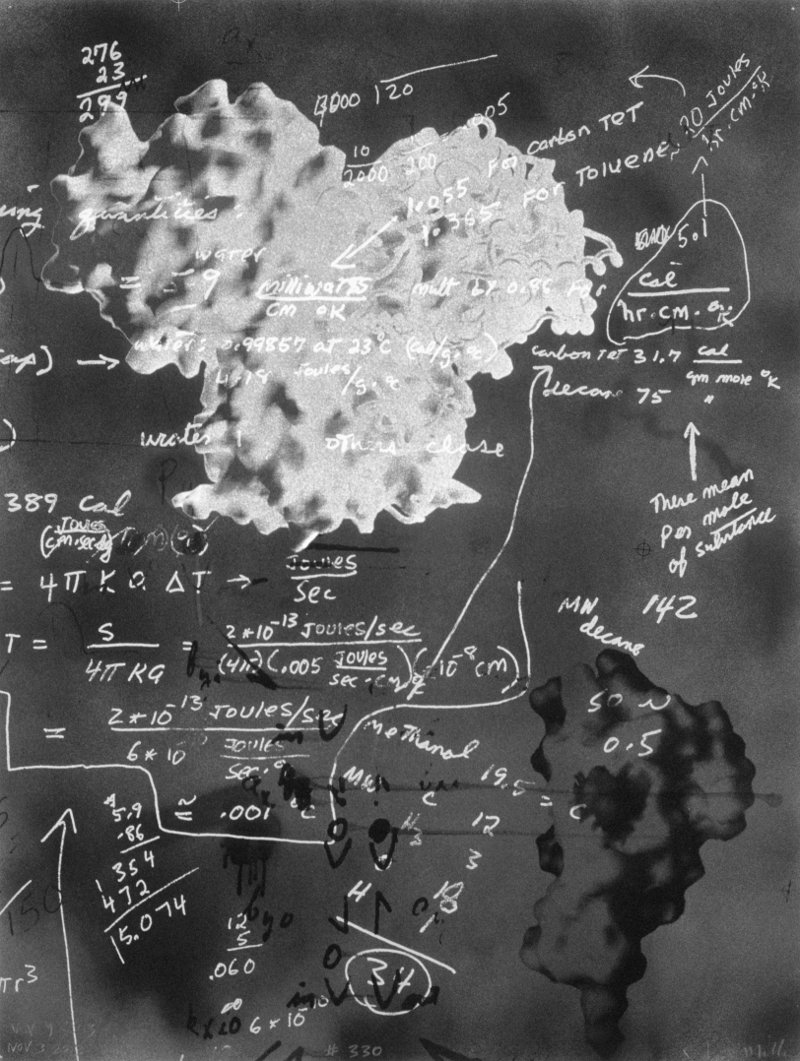
Courtesy of the Artist
Further exploring the use of technology in portraiture, in 2007 he used x-rays to produce a powerful “portrait” of a Glock pistol being loaded by a skeletal hand (p. 158).
Paul Friedlander
Paul Friedlander is a master of light. When I walked into his house the first thing I saw was a spectacular display resulting from white light shone onto a vertical vibrating rope which acted like a prism (p. 18). He invented this technique in 1983 and called it “chromastrobic light.” String Theory II (Insert) is an example of it. Friedlander told me that although he never made a video of String Theory II, he had done so of a similar installation shown here:
Audio: Finding Voice by Laurie Spiegel?.
Friedlander’s huge solo show in Valencia, Spain, in 2006, Timeless Universe, “was a response to the English physicist Ian Barbour’s contentious hypothesis that time does not exist” (pp. 18-19). “The light sculptures that make up Timeless Universe form a seemingly endless stream of waveforms colored by chromastrobic light” – it is a meditation inspired by Barbour’s idea, dramatically shown here:
Tim Otto Roth
In 2010 Tim Otto Roth and Bob Fosbury presented data from the Hubble Space Telescope on the chemical makeup of stars in a most unusual way. Using bright green laser light they projected the jagged curve of these data onto the façade of the Palazzo Cavalli-Franchetti in Venice. As Fosbury put it the squiddly green line “which looked uncannily like a cardiogram, held symbolic meaning – it was the ‘heartbeat of the universe’.” (p. 129). Here it is in color in this stunning video.
Courtesy of Tim Otto Roth [imachination projects] & Bob Fosbury
Among Tim’s other explorations of the intersection of art and science is a sound artwork he called Heaven’s Carousel which premiered in March 2014 at the fourth Hubble Space Telescope Conference at the Accademia dei Lincei in Rome. Inspired by Hubble research, in particular the accelerating universe, it is a huge carousel-like sound installation with 36 rotating illuminated loudspeakers.
Courtesy of ESA/Hubble
